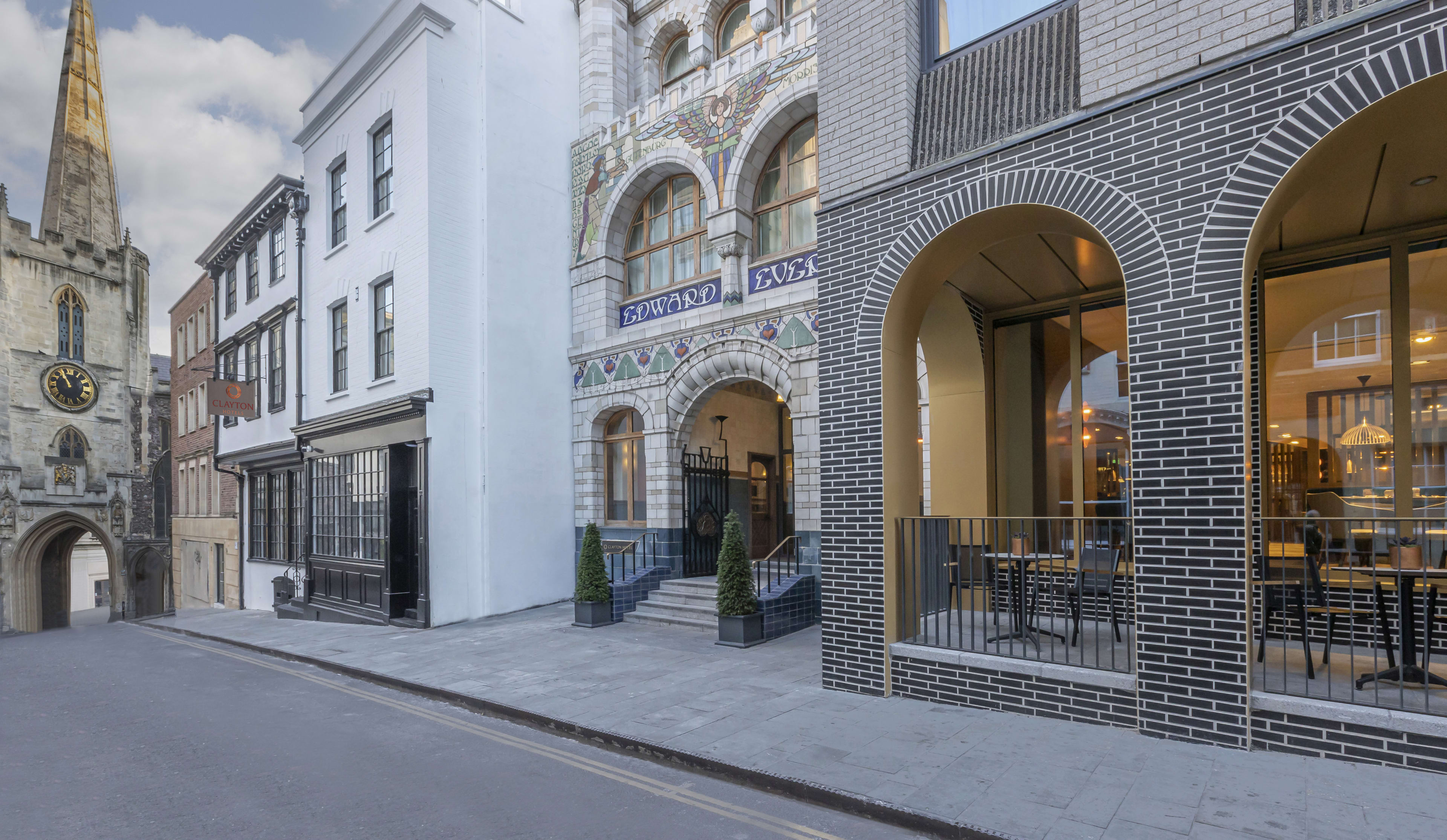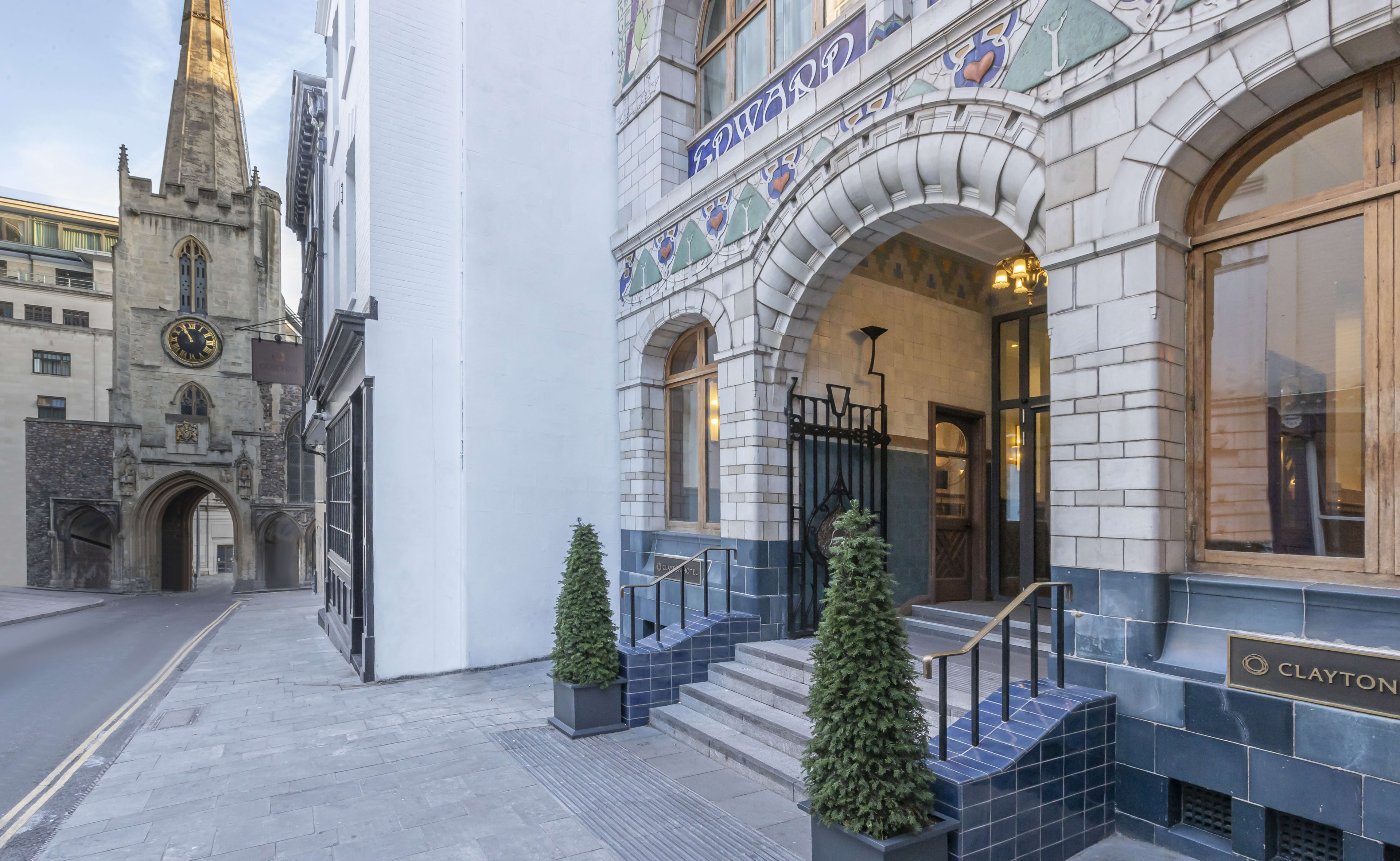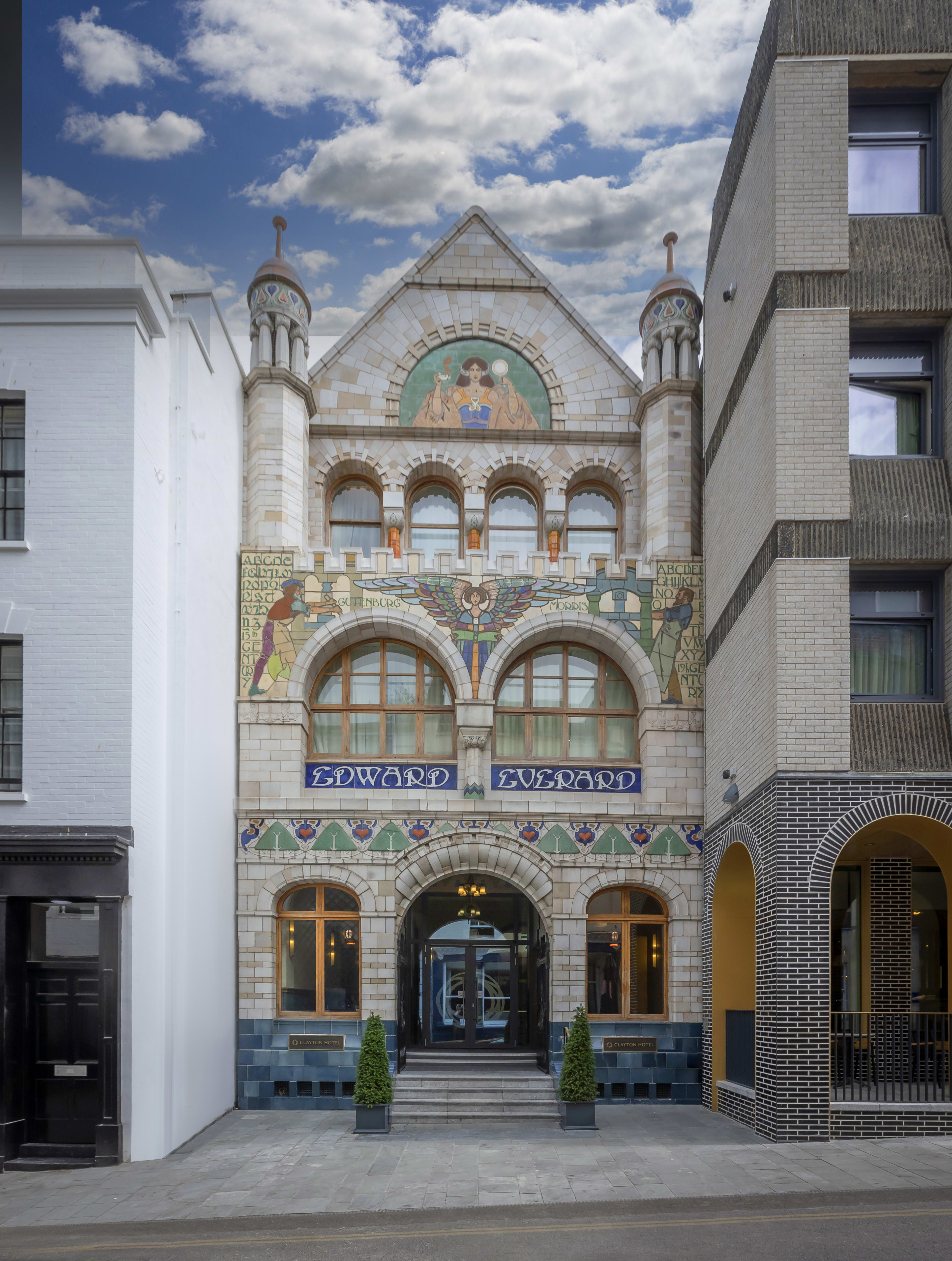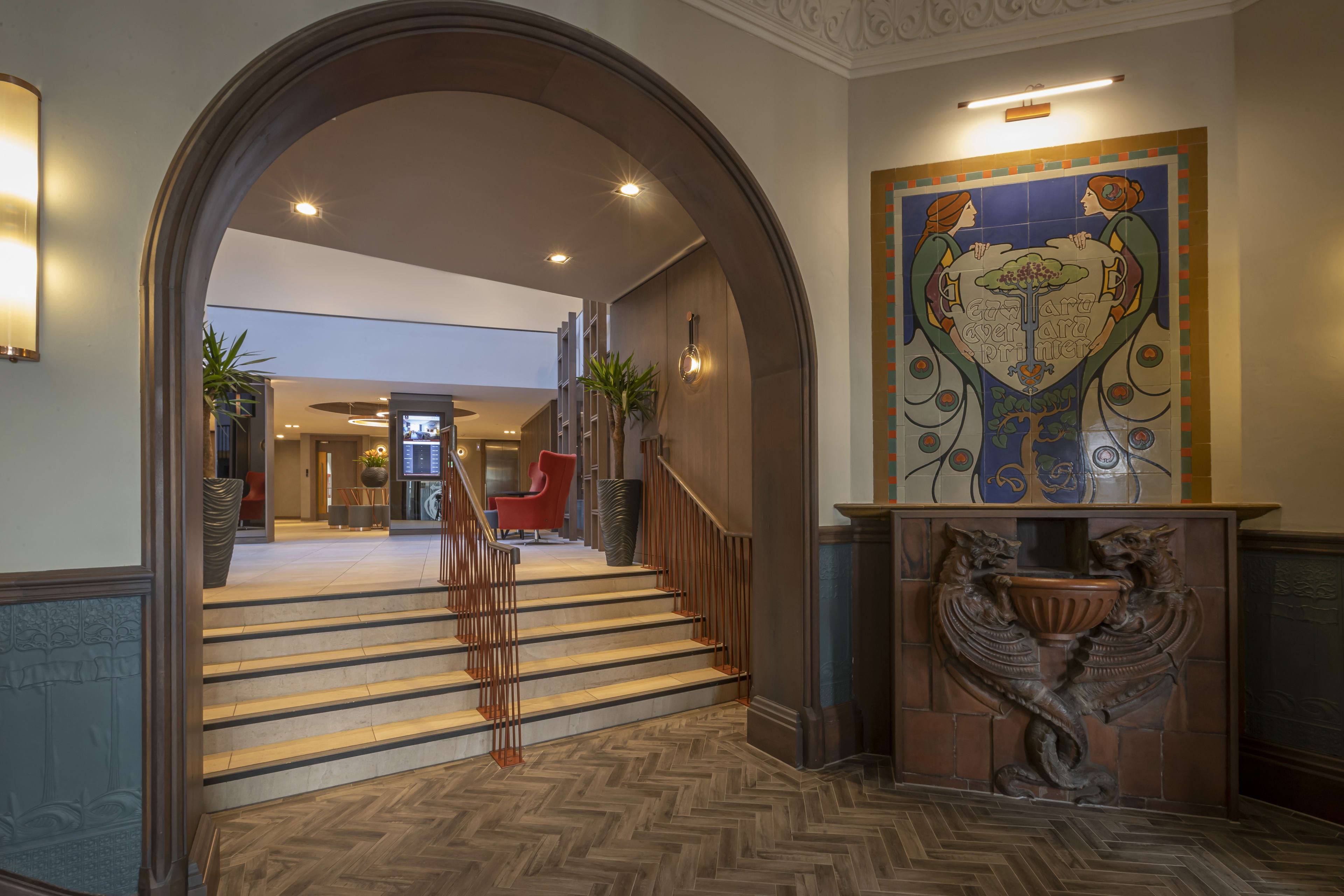

Lose yourself in Bristol’s
history

Hotel History
Dive into the story behind Clayton Hotel Bristol’s historical façade.



Dive into the story behind Clayton Hotel Bristol’s historical façade.
In the 1900s, with literacy levels increasing and demand for books and advertising on the rise, Bristol started to establish a strong printing reputation. Edward Everard was one of the key players in the city and a founding member of the Bristol Master Printers and Allied Trades Association. He wanted a location for his print works, he wanted a building that reflected the city he knew. This was the start of Clayton Hotel Bristol’s story.
The Everard’s Printing Works built by Henry Williams in 1900 is a Grade II listed building with a front façade designed by Doulton’s & Co’s chief designer, WJ.Neatby. The female figure at the top represents Light and Truth, the arch design reflects the Church of St John the Baptist, which is located just down from Clayton Hotel Bristol. William Morris and Johannes Guttenberg are also celebrated in the design for their contributions to printing and literature.
Take a closer look at Everard’s name written in the Art Nouveau typeface and wrought iron gates which incorporate Edward Everard's initials.
Although the building was demolished in the 1970s, fortunately, the façade was saved and incorporated into the hotel design. The façade and the gates were lovingly restored as the entrance to Clayton Hotel Bristol.
Interested in learning more about Clayton Hotel Bristol’s history? Talk to a member of our team who will be glad to share more of our story with you.





